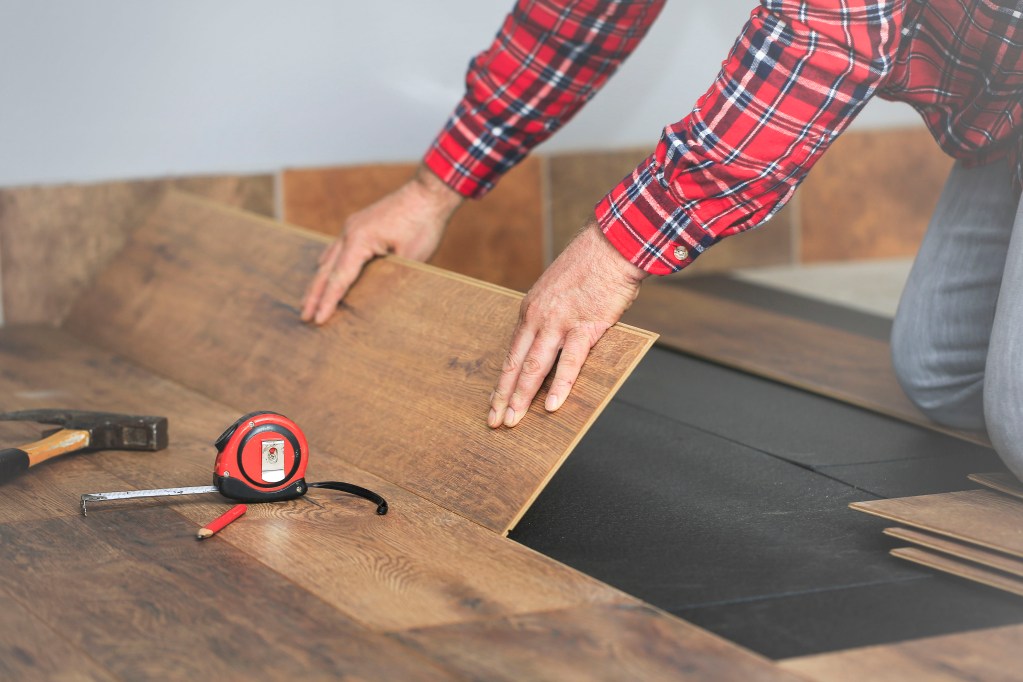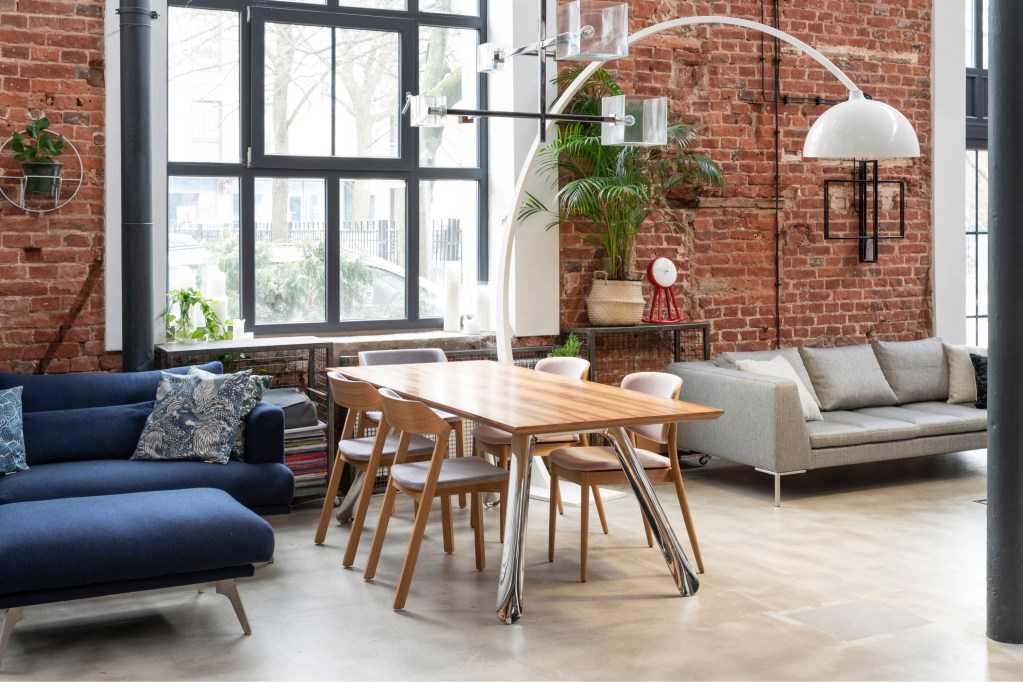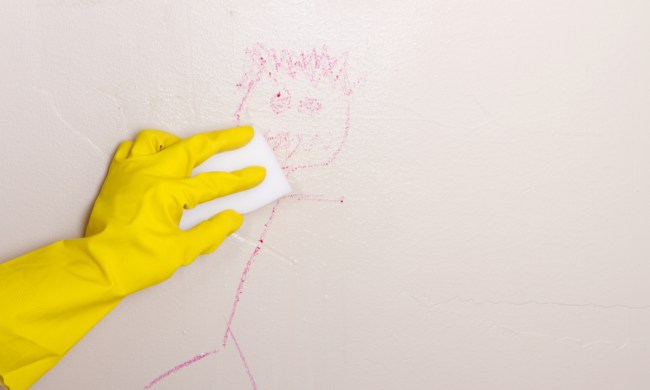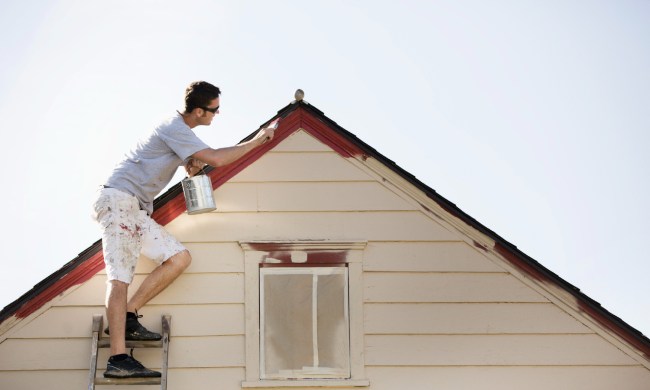
To the untrained eye, vinyl and laminate flooring appear very similar. However, they each differ regarding their materials, appearance, and durability. While these two flooring solutions are similar in many ways, they also have a few key differences.
If you’re deciding between laminate vs. vinyl flooring for your home, then we have everything you need to help you weigh the pros and cons.

What is laminate flooring?
Laminate flooring is a synthetic floor made of multiple layers fused together through a process called lamination, hence its name. It often has a composite board at its core made of melamine resin and fiberboard materials. On top of this core are additional synthetic layers and a photo applique layer, which often resembles the look of real wood. A clear protection layer is then added on top for enhanced durability.

What is vinyl flooring?
Like laminate flooring, vinyl flooring is made of synthetic materials with a photographic applique resembling the look of the flooring you’re aiming for. The key difference between vinyl and laminate is the material of the core. Vinyl flooring is made of entirely synthetic materials and doesn’t have the same core as laminate. Instead, the base layer of vinyl is often thin PVC plastic bonded to felt or fiberglass.
There are two popular types of vinyl flooring: luxury vinyl tiles or planks (LVT or LVP) and vinyl rolls. Vinyl rolls are sold in 6 to 12-foot sections, making it easy to cover an entire room with few or no seams. Alternatively, vinyl tiles are placed tile by tile. LVT is often thicker than vinyl sheets, but both are made of similar synthetic materials and have most of the same pros and cons.

Difference between laminate vs. vinyl floors
While the main difference between vinyl and laminate flooring is their structure and inner core, these two flooring options differ in other ways.
Appearance
Laminate flooring is known for its stunning and realistic appearance. Due to its photorealistic imaging and deep embossing, it can exceptionally mimic real wood.
Vinyl flooring can also look nice, but it’s unlikely to have a photorealistic appearance similar to that of laminate flooring. Vinyl flooring excels with patterns, tile images, and modern flooring options. However, LVT (tile) and LVP (plank) floors can sometimes have more realistic imaging.
If you’re going for the appearance of natural wood, choose laminate.
Cost
Both laminate and vinyl flooring are similar in price. They are more affordable than other flooring alternatives like porcelain tile or hardwood.
Laminate flooring ranges from $1 to $5 per square foot, depending on the brand, thickness, and appearance. Vinyl flooring costs can also range from $1 to $5 per square foot, depending on the type of flooring you choose. Glue-down vinyl sheets and rolls are the most affordable, often averaging $1 per square foot. LVP and LVT flooring are typically more expensive.
Durability
Vinyl flooring tends to be more durable, heat resistant, and water resistant than laminate flooring.
Laminate flooring is a durable flooring option that can last a long time. However, excessive wear may degrade the lamination and cause chipping or delamination. Additionally, fluctuations in heat can cause the fiberboard core to expand and contract. Laminate flooring is also not water resistant. Pooled water can warp laminate floors, making them a poor choice for bathrooms, kitchens, laundry rooms, and mudrooms.
Vinyl flooring tends to be more durable than laminate. It can handle high-traffic areas, spills, and heat fluctuations. Sheet vinyl is more durable than LVP or LVT because there are no seams where water could potentially reach the subfloor and damage it. Vinyl flooring doesn’t change much with temperature changes, but extreme heat could affect the glue adhering it to the subfloor.
Care
Both laminate and vinyl flooring are easy to clean. Sweeping and vacuuming should be the go-to, but vinyl flooring can also do well with mopping. If you plan to use a wet mop for laminate, just be sure to do so lightly and avoid allowing standing water or lasting wetness, which could damage the floors.
Installation
Laminate flooring is sold in planks with tongue-and-groove ridging, making it easier for DIYers to click and lock the planks into place without any glue or nails. An underlayment is necessary for laminate flooring because these planks are often considered floating floors.
DIYers find LVT and LVP easy to install as they have built-in underlayment. Additionally, the separated tiles or planks make it easy to lock the vinyl flooring into place section by section. Vinyl rolls, however, are more challenging to install. Since they are one big sheet, many prefer to hire a professional to lay this flooring smoothly without any ripples or poorly cut corners.
Resale value
Neither laminate nor vinyl floors boost resale value like hardwood, natural stone, and ceramic tile do. Since these flooring options tend to be cheaper, they are unlikely to boost your home value. However, laminate and vinyl flooring look beautiful if well maintained, so prospective buyers likely won’t be deterred by these flooring solutions.
Environmental impact
If you’re looking for eco-friendly flooring materials, you’re unlikely to find them in laminate or vinyl flooring.
Laminate flooring may be slightly more eco-friendly, as the fiberboard base could be made of recycled materials. However, the plastic surface layer and resin materials used in the product are not very environmentally friendly. Vinyl flooring is a synthetic material that produces toxic chemicals when burned. The manufacturing process isn’t very eco-conscious, and vinyl floors cannot be recycled, reused, or decomposed in landfills.

Pros and cons of laminate vs. vinyl floors
Laminate
Pros
- One of the most affordable flooring options
- Has a photo-realistic applique that can resemble natural wood
- Easy to install for DIYers
- Easy to maintain and care for
Cons
- Can warp from excessive water damage
- Does not handle drastic heat fluctuations
- Not very environmentally friendly
- Won’t boost resale value
Vinyl
Pros
- One of the most affordable flooring options
- Waterproof and more heat resistant than laminate
- Ultra-durable flooring solution
- Easy to maintain and care for
Cons
- Vinyl sheets may be tricky for DIYers to install
- Image layer is not as photo realistic or detailed as laminate
- Not environmentally friendly
- Won’t boost resale value
Vinyl and laminate flooring are very similar in cost, resale value, and environmental impact. However, they differ in appearance, installation, and durability. Choosing which is best for your situation depends on the location you live, the room you plan to renovate, and the needs you expect your flooring to meet. Be sure to weigh these pros and cons before picking the option that is best for you.



